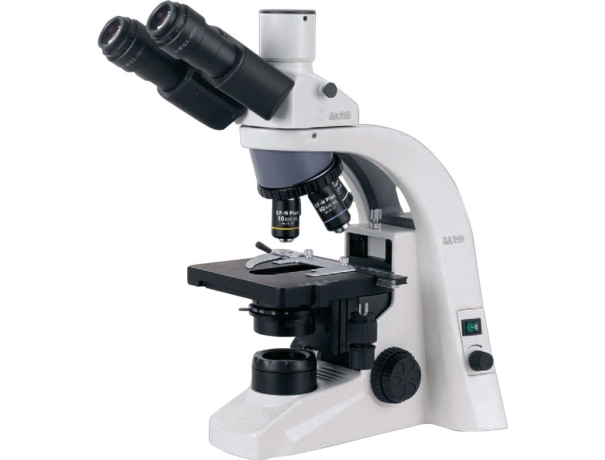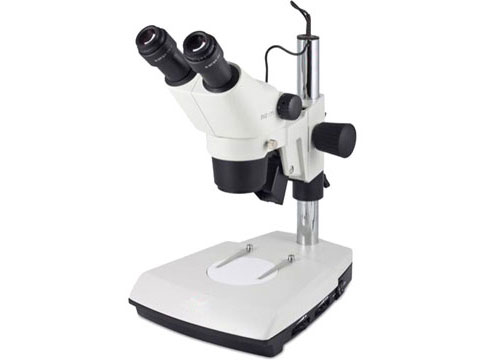It is critical to select a microscope serving your purpose depending on the type of application. Understand these basic concepts before buying a microscope:
- There are two magnification sources in a microscope. The first is the objective lens, and the second one is the eyepiece lens. The calculation of the total magnification is done by obtaining the product of the objective lens's (magnification) power with the eyepiece lens'.
- Understand which kind of microscope is needed: stereo or compound or Biological, as per your requirement.
- Most light microscope's magnification levels are needed to be less than 60x for their various uses.
Types of microscopes and what to remember before buying them:
Biological microscopes use transparent samples. These samples are suitable for samples from plants and animals. The biological microscope allows observation of different cells and their contents, different tissue sections, very small structures of plants, small creatures such as amoebas, cells, bacteria, biological samples and more

For viewing larger specimens, a stereo microscope/low power microscope is required because such specimens require minimal magnification, typically between 6.5x to 45x. The microscope produces a three-dimensional view of the object and is equipped with a minimum of two eyepieces. A stereo microscope is required to observe larger objects such as insects, beetles, plants, rocks, diamonds, etc.
Stereo microscopes are also available in a trinocular arrangement for photography applications. There can be a variety of bases constructed for stereo microscopes and can also be integrated.

Compound microscope:
If you are examining samples like bacterial, blood, or water creatures, you will require a compound microscope because these specimens are tiny in size. Being a microscope with high power, a compound microscope has the ability to discern the intricacy of such specimens. There are 3 to 5 objective lenses with magnifications ranging from 4x to 100x in a compound microscope. With ten magnifying eyepieces and a one hundred magnifying objective, the overall magnification comes to 1,000 times.
When selecting this microscope, you must also pick if the model of the microscope is monocular (one eyepiece), binocular (two eyepieces), or trinocular model (trinocular port with two eyepieces)
Option on the digital microscope: A digital microscope is an advanced microscope that allows you to view samples on a large screen and then share the results. Its uses are in industries, such as education, research, medicine and industrial manufacturing
Illumination:
Having four basic types:
- LED Microscopes (portable):
The microscope becomes completely portable when LED ring lights have rechargeable batteries. Such microscopes can be used at trade exhibitions with limited electricity outlets, fields, and places with wiring issues or conferences.
- Tungsten:
Basic lighting in tungsten for entry-level microscopes.
- Halogen:
In general, a pedestal microscope of high quality should come equipped with halogen lighting. Halogen bulbs generate a bright white light, and the light's intensity can be changed with a variable rheostat.
- A Fluorescent Lamp:
In stereo microscopes, fluorescent ring lights are frequently employed as auxiliary sources of light when more illumination is necessary. Contrary to popular belief, these ring lights are not fluorescent microscopes.
Keep these other things in mind while making a choice:
- Monocular microscopes are normally the cheapest possible kind of microscope, while trinocular microscopes are the most expensive when it comes to cost.
- There is a plethora of low-cost, low-quality microscopes available, ranging from poorly produced imports to plastic toys. The majority of them are constructed of low-grade materials, have poor optical quality, and are prone to break. The optical quality is mostly influenced by the objective lens and somewhat by the eyepiece. Achromatic lenses are the gold standard for high-quality, objective lenses.
- The mechanical stage is standard on the majority of binocular microscopes. While performing complex applications, a mechanical stage is needed that the majority of monocular microscopes lack. Trinocular microscopes are often employed when microphotography requires the third port.
- The majority of people believe that monocular microscopes are much harder to handle than binocular microscopes, but it is not so.
- Magnifications of up to 1000X can be done by monocular microscopes, whereas a binocular microscope can perform greater magnification levels.
- Need digital? Do you need to see the samples on a big screen?
- Lens quality
- What are your uses of the microscope?
Microscope for Laboratory? For Schools? For Experiment?
MRCs provide a wide range of microscopes of different types for different industries